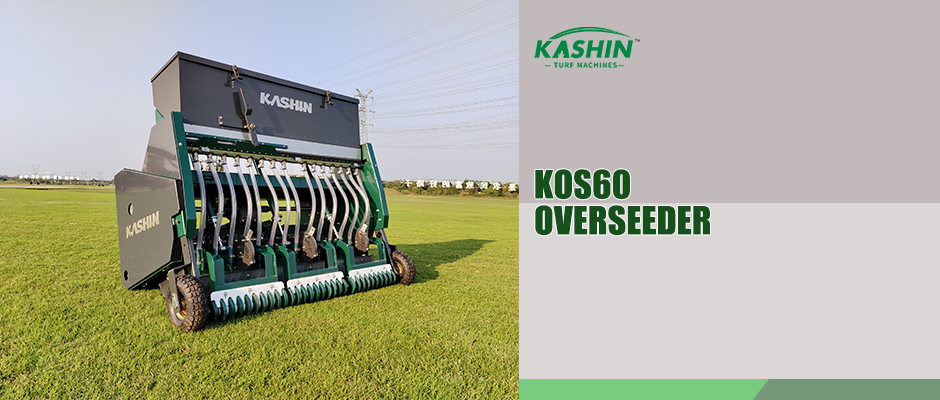After the beginning of spring, the average temperature rises, and different types of lawns begin to grow again, forming a new green, and the lawn enters the regreening period. When it reaches above 4°C, the upper stems and leaves of cold-land lawns begin to grow, and the peak reaches the greening stage. The growth rate is fastest at 15-25℃. Warm-ground turfgrass will only pull out new shoots from the stem base or rhizome when the temperature rises to 10-12.7℃ in the near future, and gradually grow roots, stems and leaves. The growth temperature of turfgrass is 25-35℃. The spring growth recovery of turfgrass starts from the underground part first. Cold-land turfgrass begins to grow when the temperature is about 0°C. The root system of warm-land turfgrass also recovers earlier than the ground part, but it has higher temperature requirements. High (7~11℃). To promote the lawn to turn green in advance, management needs to be strengthened from the following aspects.
1. Strictly control the three levels and pour the greening water well
As the temperature rises, the lawn gradually enters the greening period. During this period, the supply of water is crucial to the growth of turfgrass. Water is permeable 1-3 times from one week before the turfgrass turns green to during the period. This is especially important in dry areas or years. Very important. When pouring water that turns green, three things must be strictly controlled.
Turn off the temperature well. “It freezes at night and disappears in the day, so watering is just right.” This is a summary of the experience of watering back green water on cool-season lawns in the north. Do not blindly pour the water that has returned to blue early. If the frozen soil has not melted away, watering early will easily accumulate water, freeze, and catch cold. It can only be carried out when the daily average temperature reaches above 3℃. The lowering of ground temperature affects the root development and microbial activity of turfgrass, causing turfgrass growth to stagnate or the formation of small old seedlings. After the soil layer is cleared, if the water source condition is poor, watering should be done immediately according to the seedling condition. If the water source condition is good, watering can be started when the ground temperature stabilizes above 5℃ 5cm after the soil layer is cleared.
Turn off the amount of water. Strictly control the amount of water when pouring back green water. Due to the large temperature changes between day and night in early spring and the frequent alternation of cold and warm air currents, the amount of watering is suitable for small amounts of water rather than flooding with large amounts of water to prevent freezing damage to turfgrass caused by too low temperatures and ground temperatures in the event of a cold snap.
According to the moisture content of the lawn, determine the order of starting watering. Water large seedlings and strong seedlings first, then weak seedlings; water seedlings in sandy soil with good permeability first, then water seedlings in sticky soil with poor permeability; Water the seedlings with severe drought first, and then water the seedlings with mild drought. The seedlings in saline-alkali soil should be watered later; for lawns with too large groups, watering can be delayed to promote the polarization of large and small tillers. In either case, drought will Spring lawns must pay attention to the combination of watering and soil loosening measures to achieve good results.
2. Apply green fertilizer
Spring is an important time for lawn fertilization, which plays a vital role in the growth of the lawn throughout the year. One week before the lawn returns to green, rational fertilization should be carried out in conjunction with pouring green water. This period mainly promotes the rapid return of lawn to green and seedlings. Use urea based on nitrogen fertilizer, and spread it evenly according to the fertilization rate of 5gN/m2. It can effectively promote the lawn to turn green early. After the lawn turns green, nitrogen, phosphorus and potassium compound fertilizer can be applied in conjunction with watering. At the same time of fertilization, a strong and rapid rooting and seedling strengthening agent can be added, which can stimulate callus formation, promote root differentiation, accelerate root development, cultivate strong seedlings, improve lawn quality and prevent lawn diseases, etc., especially for lawn diseases due to It has a remarkable rejuvenation effect on weak and diseased seedlings caused by lawn degradation caused by extreme environmental conditions.
3. Cultivate to loosen the soil and drain and reduce soiling. Before turning green, the compacted lawn should be plowed and soiled. For sites with high groundwater levels, surrounding ditches and backbone ditches should be opened for drainage and soiling reduction.
4. Do a good job of filling the gaps. Due to freezing damage or human factors, turf grass is prone to bald spots. For the phenomenon of bald spots, work should be done to fill the gaps in time. Warm-land turfgrass can be planted by stem planting, cold-land turfgrass can be planted by seeding, or transplanting can be used to fill gaps. To fill the gaps, timely watering and fertilizing are required. Promote early emergence, early survival and balanced growth.
In short, fertilizer and water management is an important step in promoting the lawn to turn green in advance. During this period, the supply of fertilizer and water required for the lawn grass to turn green must be ensured.
Post time: Aug-23-2024
